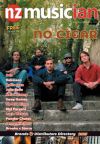Tutors’ Tutorial: Why Ableton Doesn’t Suck!
Tutors’ Tutorial: Why Ableton Doesn’t Suck!
To the people who use Ableton, you know why it doesn’t suck. In fact, the case is quite the opposite. It blows! Blows audio fish out of the audio ocean with audio dynamite.
Far too often I’ve heard stories of people’s mistaken first encounters with the mythical beast that is Ableton.
The untamed wilderness that is the Session View. The unforgivable tragedy that is having your tracks on the right-hand of the screen instead of the left. Burn the witch that decided to put all your effect plugins for a track in one compact, easy to navigate, portion of the screen. ‘No thanks! I want my plugins to open up one at a time, and block half my screen real estate.’
I will attempt to reign in my sarcasm for what follows, but I can’t promise that it won’t return.
I use Ableton. I use it for music production. I use it for audio mixing and post-production. I even use it for recording. Ableton is usually perceived solely as an electronic music production tool, which it certainly does excel at being. However, just like a Kinder Surprise, or Neil deGrasse Tyson’s head, there’s so much more to discover within.
Now that I’ve cooled down a bit I can see that perhaps I should extend an olive branch, which, as far as I’m aware, means to make peace, or at least to have a look at both sides of the coin.
At this point in time, all DAWs do the same stuff. They all perform the same functions. The only difference between them is how you perform these functions.
I find that Pro Tools is by far the best DAW for recording multiple things at the same time. Logic has the best selection of software instruments and audio loops. Reason has the best… um… that thing where you can pretend to patch in cables between bits of analogue gear. I haven’t seen Fruity Loops in about eight years so I don’t really know what it can do now, but it did help churn out Crank That by Soulja Boy and for that, we are forever grateful.
For me, Ableton is the DAW that has the quickest workflow. The software was designed with laptop producers in mind so things like zooming in and out on the various windows is easier than Dark Souls with a mouse pad.
Where writing MIDI information in other DAW’s would involve multiple tools like the pencil, eraser and marquee, Ableton does it all with a combination of clicks and double clicks. This also means that if you are privileged enough to own a mouse, then you just received a mighty speed buff in terms of workflow. Throw a MIDI keyboard into the mix and now you’re cooking with fossil fuels!
The Session view or Clip view is also unique to Ableton and offers a creative and interchangeable method for composition. Populate the empty MIDI and audio clips with your musical ideas, and seamlessly jump between different combinations to help find the song structure you want. When you’re happy with the order, simply record it onto the Arrange View and work it into shape the same way you would on any other DAW.
Or don’t. Leave it set up in Session view and perform your creation live.
Oh, right. That reminds me. I’ve forgotten about the most obvious application of Ableton. The ‘live’ part.
Ableton is optimised for live performance, whether you are using it to play backing tracks for your live set, or routing instruments or vocals into the software to access your custom effects chains. Use a MIDI keyboard or controller to easily interface with any part of Ableton including effect parameters, song changes, or even just a synthesiser to rip a face melting solo. I use an electronic drum kit to trigger a sampler within Ableton which means I can assign any sound to any drum. Endless fun to be had when your kick drum is replaced with a cat’s meow.
I’m not entirely sure what I want you to take away from reading this article. If you use Ableton then I guess you know all of this already. Just carry on as usual. If you haven’t tried it before then hopefully something I’ve mentioned has peaked an interest. If so, you can download a fully functional 30 day trial of Ableton Live, just by making an account on their website. That should be enough time to get familiar with the layout and to make an informed decision on whether or not “it doesn’t suck”.
But just know that if the answer is yes, then you’re wrong. Sorry, there’s that sarcasm again.
John Rohipa is an audio lecturer at SAE Institute Auckland. He has a special passion for music and gaming, and how that influences the experience of the player.

